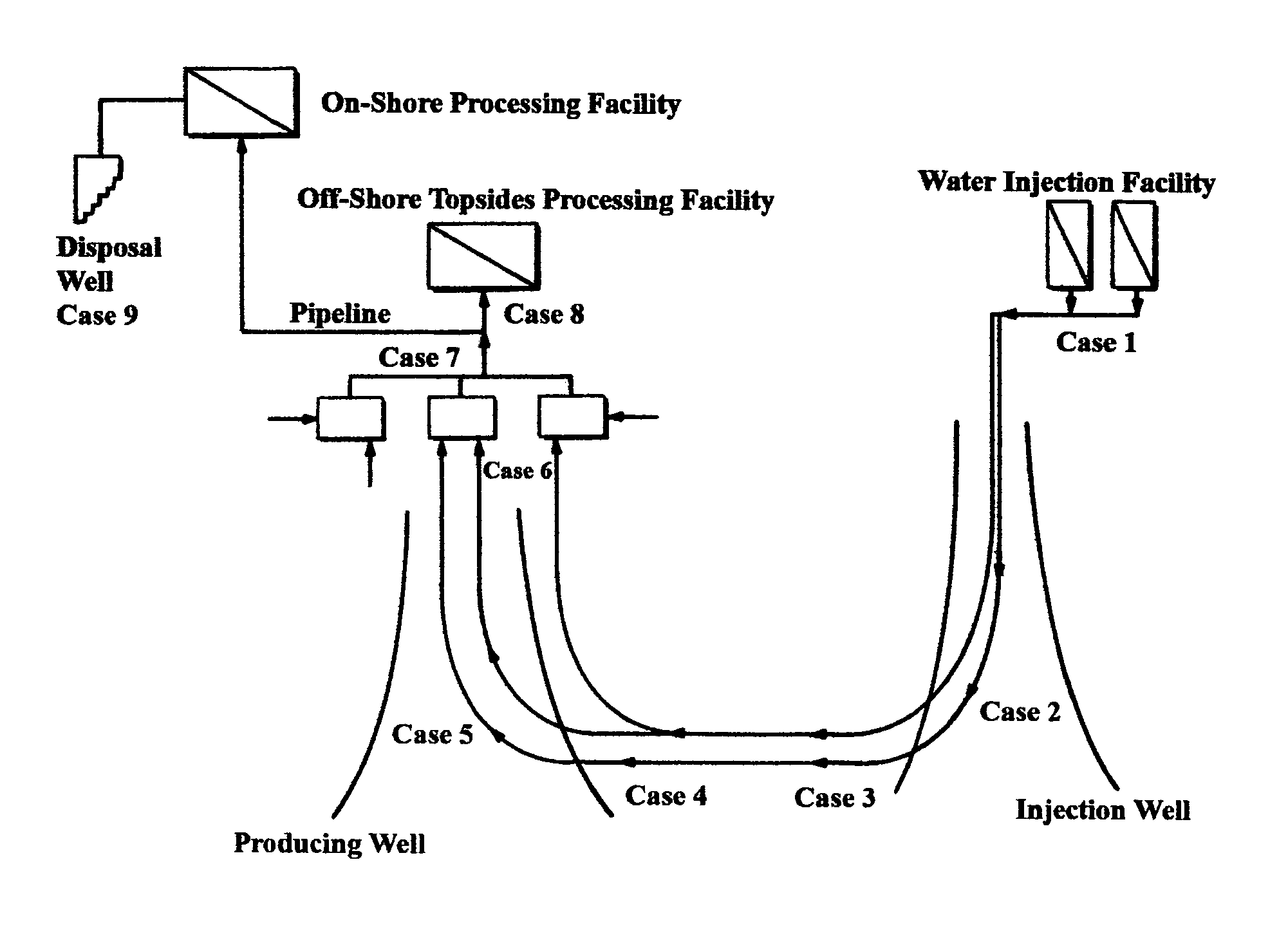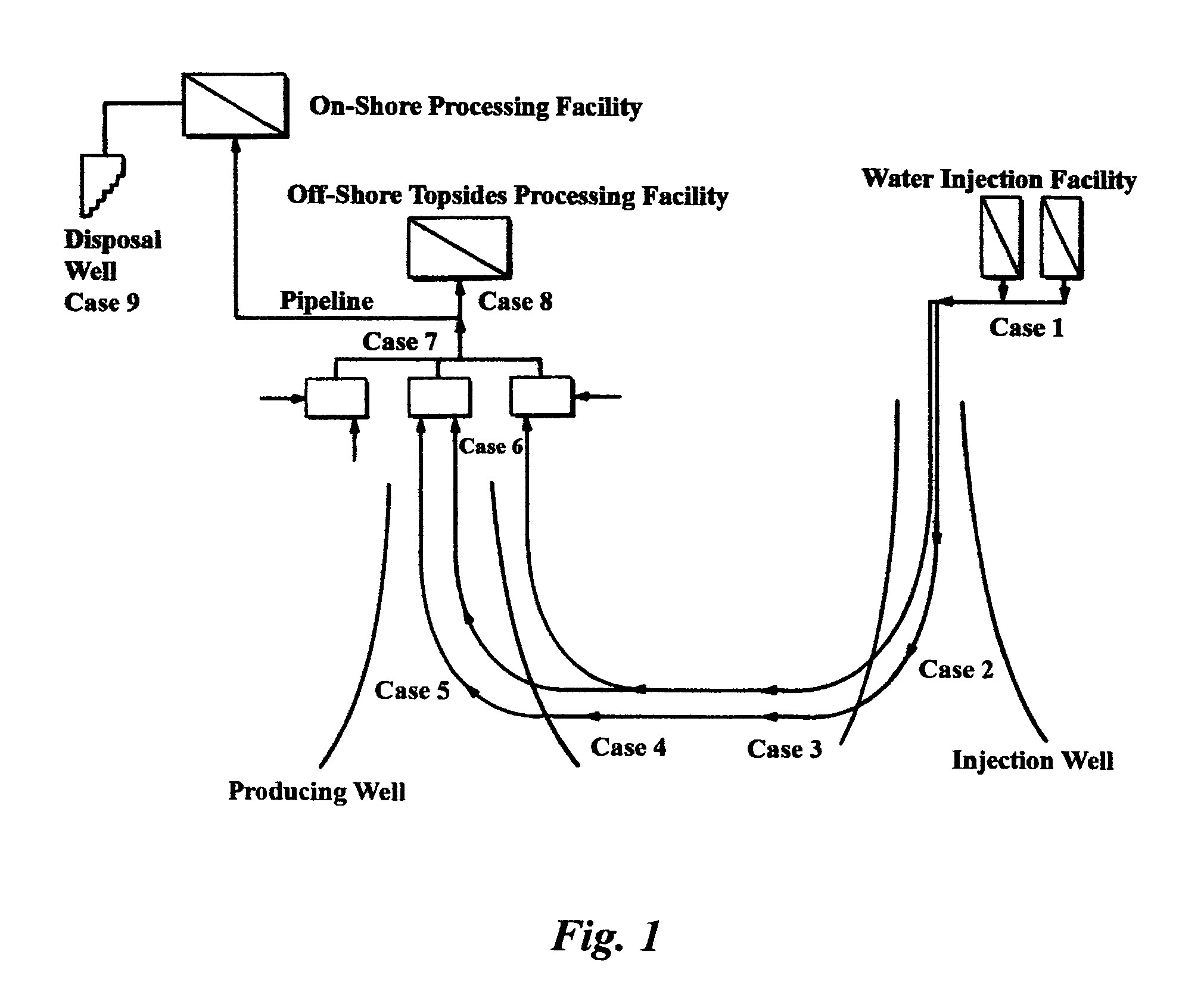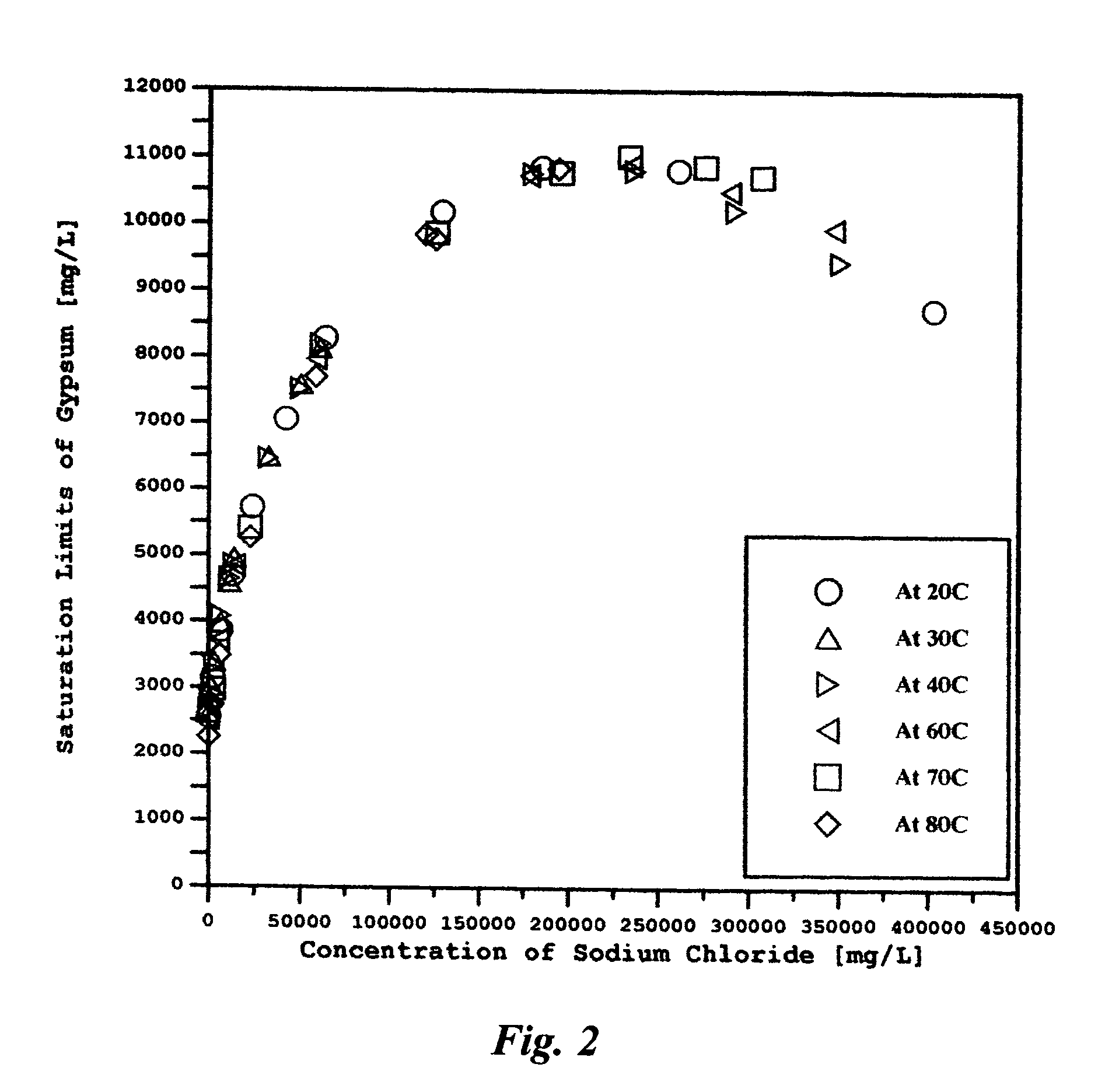Methods to produce sulfate-free saline water and gypsum
a technology of saline water and gypsum, which is applied in the direction of multi-stage water/sewage treatment, waste water treatment from quaries, and wellbore/well accessories. it can solve the problems of critical operational problems and difficulties, severe sulfate problems, and substantial capital and operating costs
- Summary
- Abstract
- Description
- Claims
- Application Information
AI Technical Summary
Benefits of technology
Problems solved by technology
Method used
Image
Examples
Embodiment Construction
[0026]Reverse osmosis (RO) systems are increasingly used in arid areas to provide fresh water. In arid areas such as the Arabian Gulf, for instance, the maximum throughput ratio of RO systems is about 30%. That is 30% fresh water and 70% concentrate stream of seawater. The predicted ion concentrations from the Arabian Gulf in the RO concentrate stream are given in Table 1. Such a stream is concentrated by a factor of 1.4, depleted of oxygen, and with a significant sheer volume (about 67% of the feed stream). The disposal of the RO concentrate stream could thus cause major technical, economical, and ecological problems.
[0027]The ongoing practice of discharging RO concentrate stream into the sea would increase the salinity around the RO intake, particularly when the dispersion of such a stream is not fast enough (e.g., not enough natural current at the disposal site, relatively shallow water, and absence of mechanical dispersion devices). In addition, the lack of oxygen in such a stre...
PUM
| Property | Measurement | Unit |
|---|---|---|
| pressure | aaaaa | aaaaa |
| pressure | aaaaa | aaaaa |
| concentration | aaaaa | aaaaa |
Abstract
Description
Claims
Application Information
 Login to View More
Login to View More - R&D
- Intellectual Property
- Life Sciences
- Materials
- Tech Scout
- Unparalleled Data Quality
- Higher Quality Content
- 60% Fewer Hallucinations
Browse by: Latest US Patents, China's latest patents, Technical Efficacy Thesaurus, Application Domain, Technology Topic, Popular Technical Reports.
© 2025 PatSnap. All rights reserved.Legal|Privacy policy|Modern Slavery Act Transparency Statement|Sitemap|About US| Contact US: help@patsnap.com



